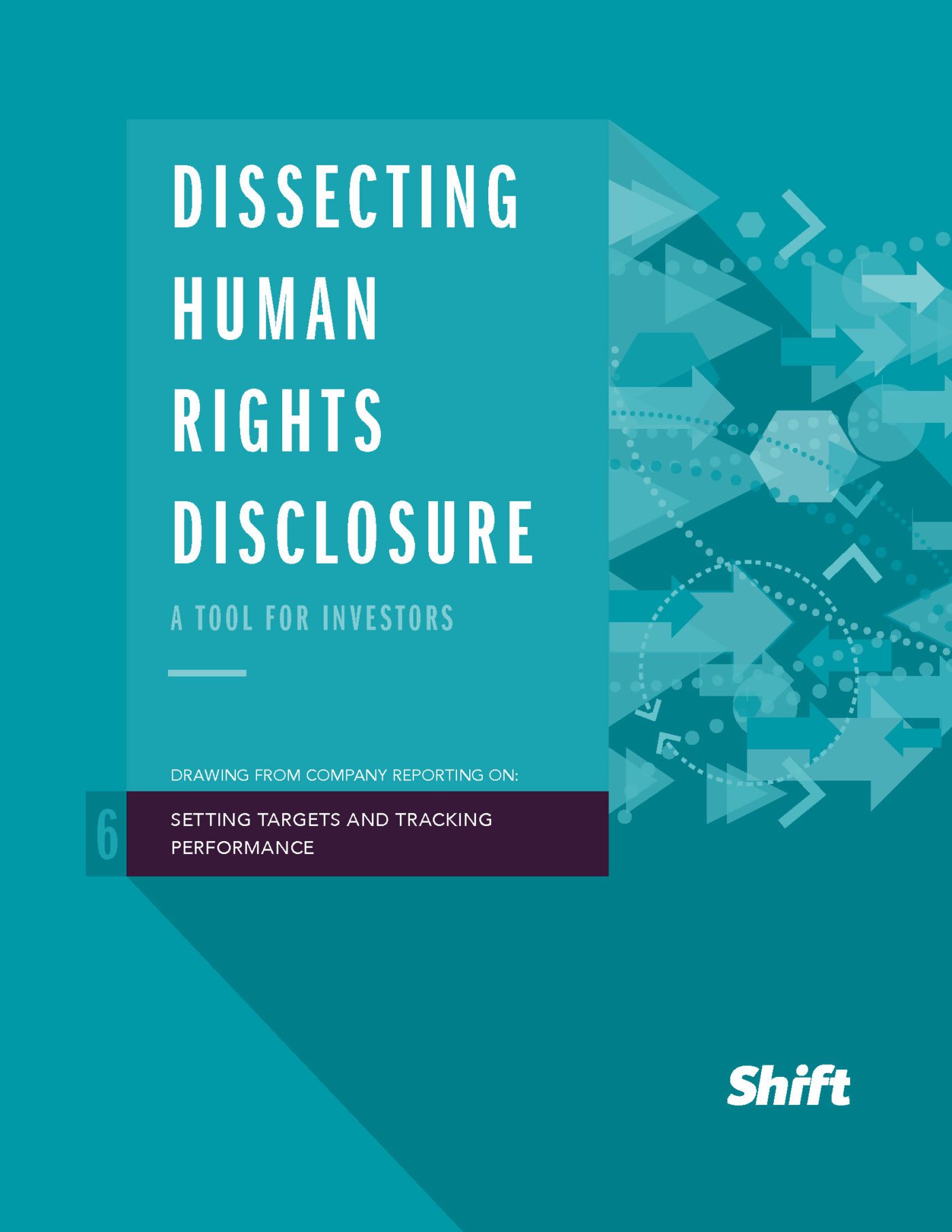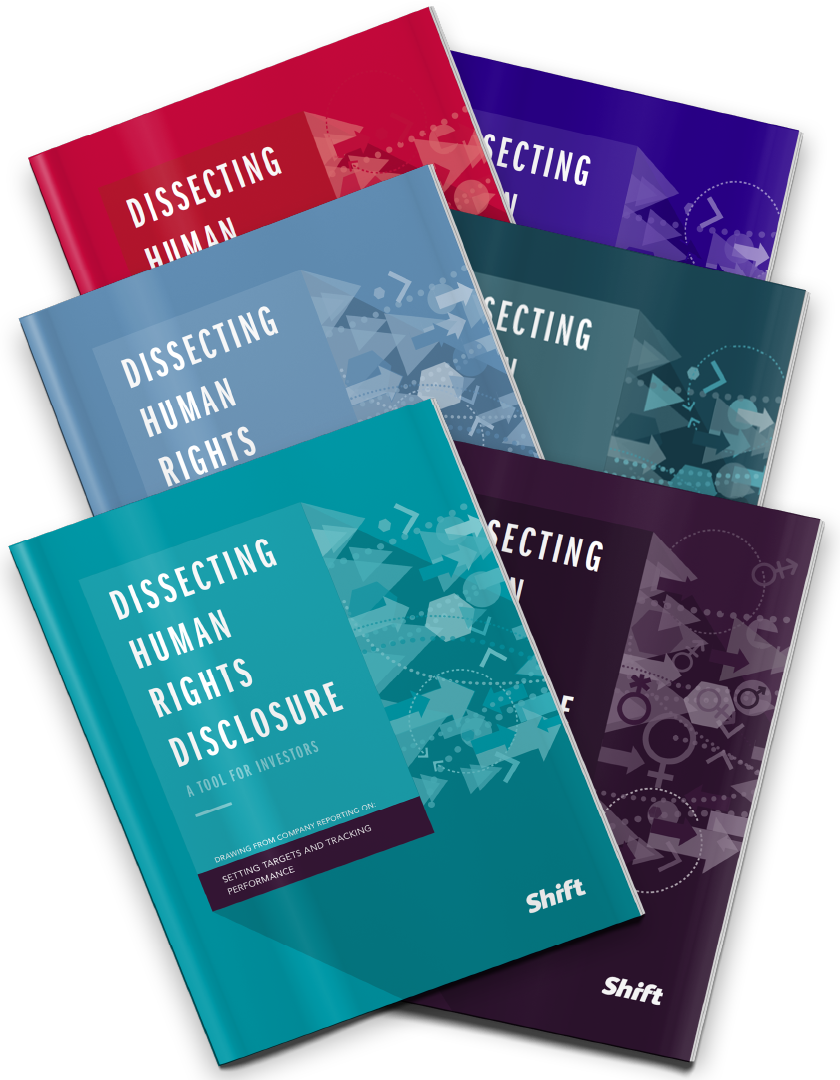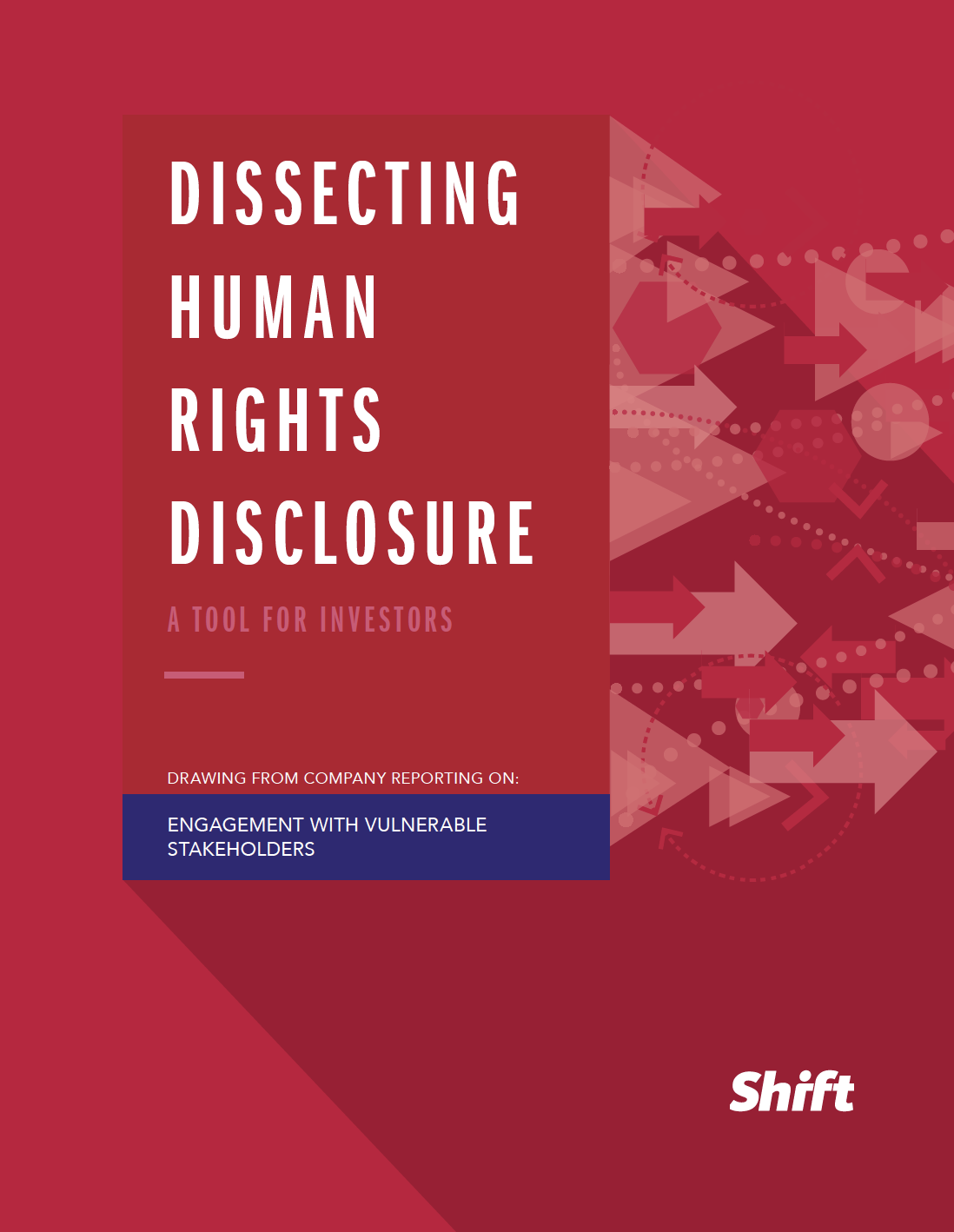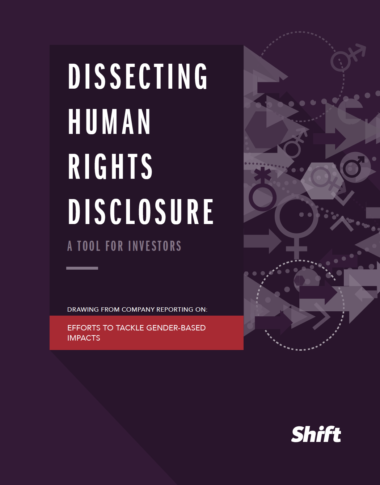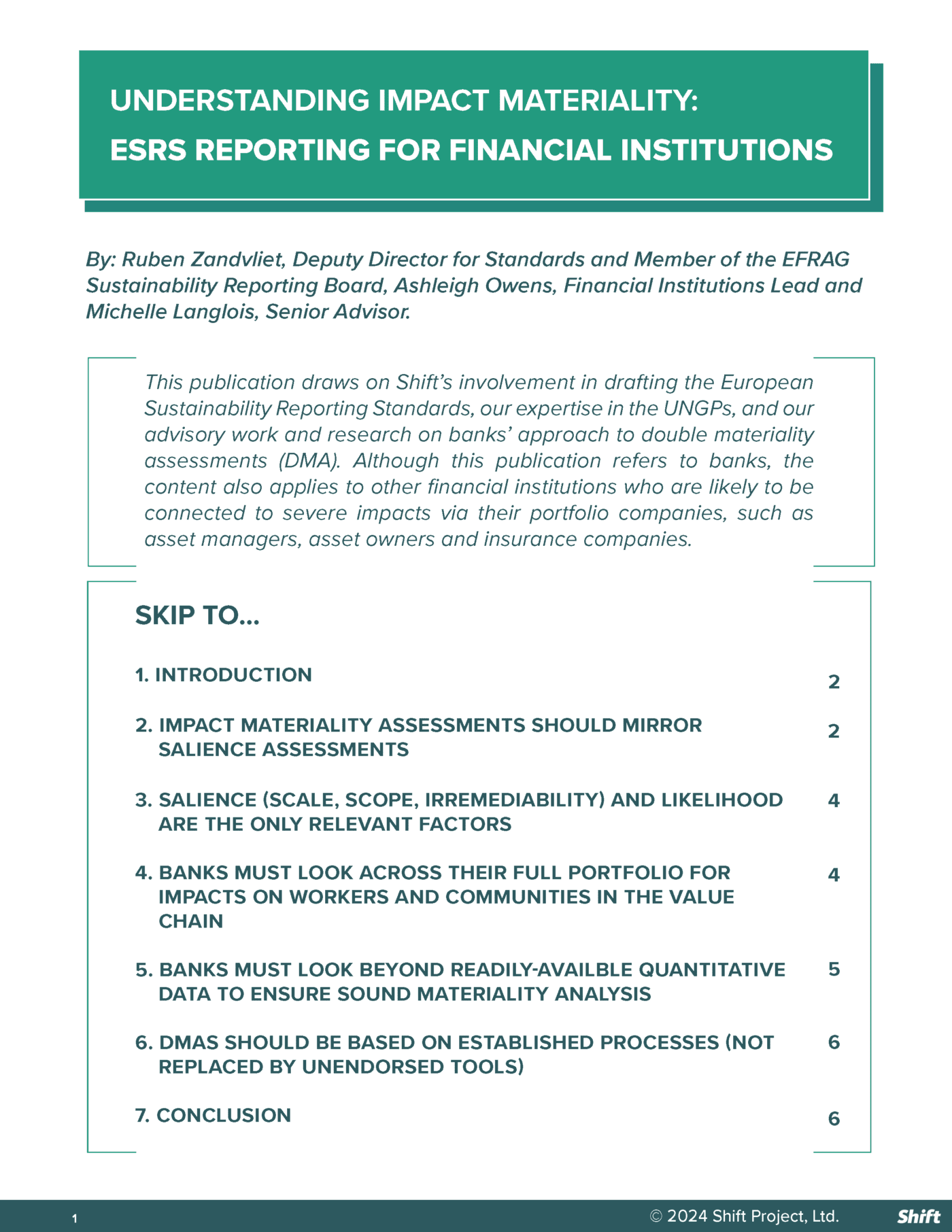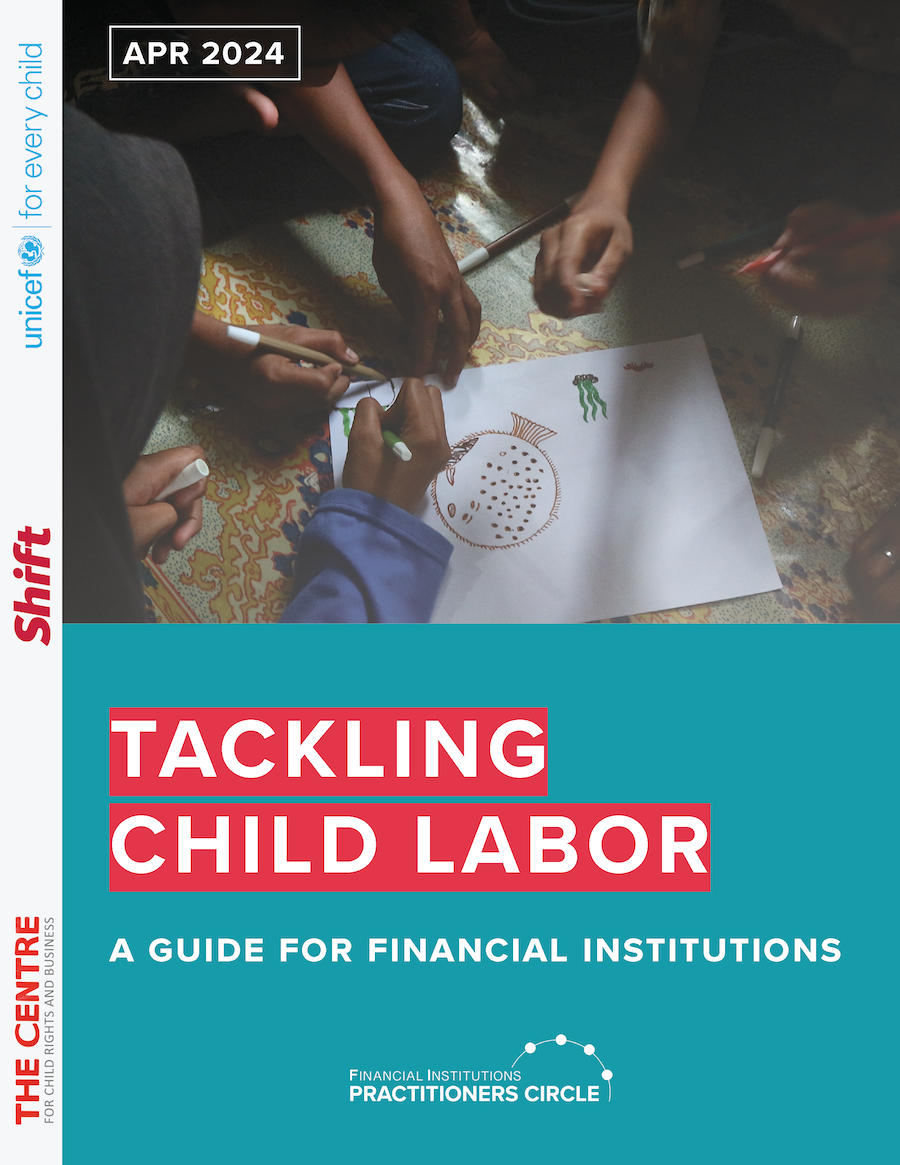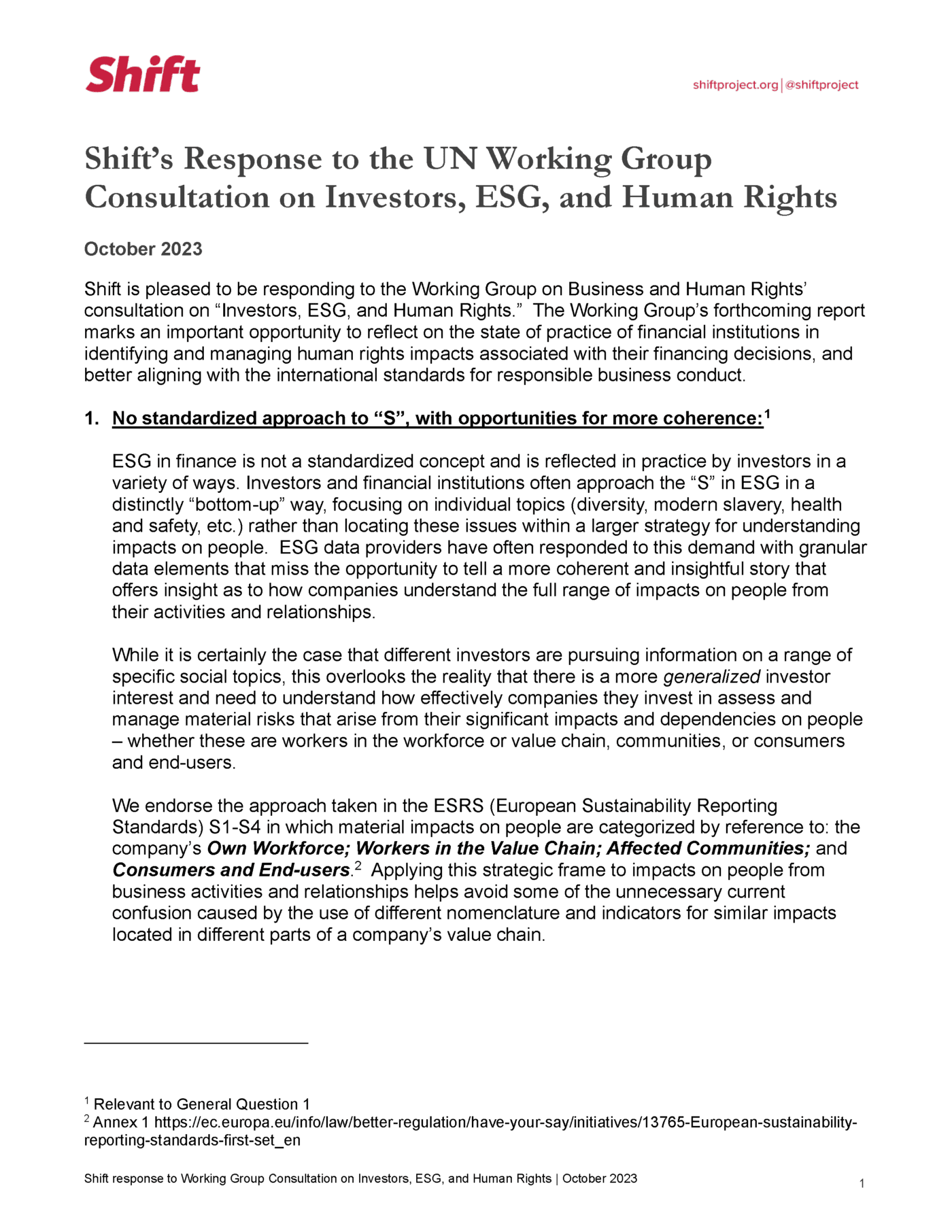Increasingly, investors are becoming interested in understanding to what extent companies are respecting human rights, and whether their efforts are likely to improve the lives of affected people. A good place to start is by reading a company’s human rights disclosure. But company reports are often hard to analyze. On the surface, many companies will seem to be doing the right thing. But, how can investors tell whether what they are reading is meaningful and in line with what the UN Guiding Principles expect? This collection of resources was designed by Shift to help investors apply a people-centered approach to gain deeper insights from company disclosure.
In each issue, we have selected a number of excerpts from different companies that have generally taken a forward position on business and human rights and are considered leaders in reporting in their sector. We provide a brief analysis of each excerpt, highlighting strengths in the insights it offers, and note some elements that could make it stronger.
In March 2020, Shift published the first two issues of the series:
ISSUE 1 – Engagement with Vulnerable Stakeholders
______
This resource is meant to serve as a guide for investors and others in analyzing companies’ disclosure on their stakeholder engagement practices. The aim is to help readers identify potential strengths and gaps in the underlying performance of the company in engaging vulnerable groups.
This resource uses company reporting from Marks & Spencer, Best Buy, Teck, Adidas and Rio Tinto.
ISSUE 2 – Efforts to Tackle Gender-Based Impacts
_____
This resource uses excerpts from companies’ reporting on their efforts to tackle gender-based impacts. In particular, it looks at whether a company’s disclosure indicates that it sees gender impacts as relevant for business; whether a company’s disclosure suggests it has real insights into women’s experience in the workplace; and whether a company’s disclosure suggests it is alert to other dimensions of gender-based discrimination.
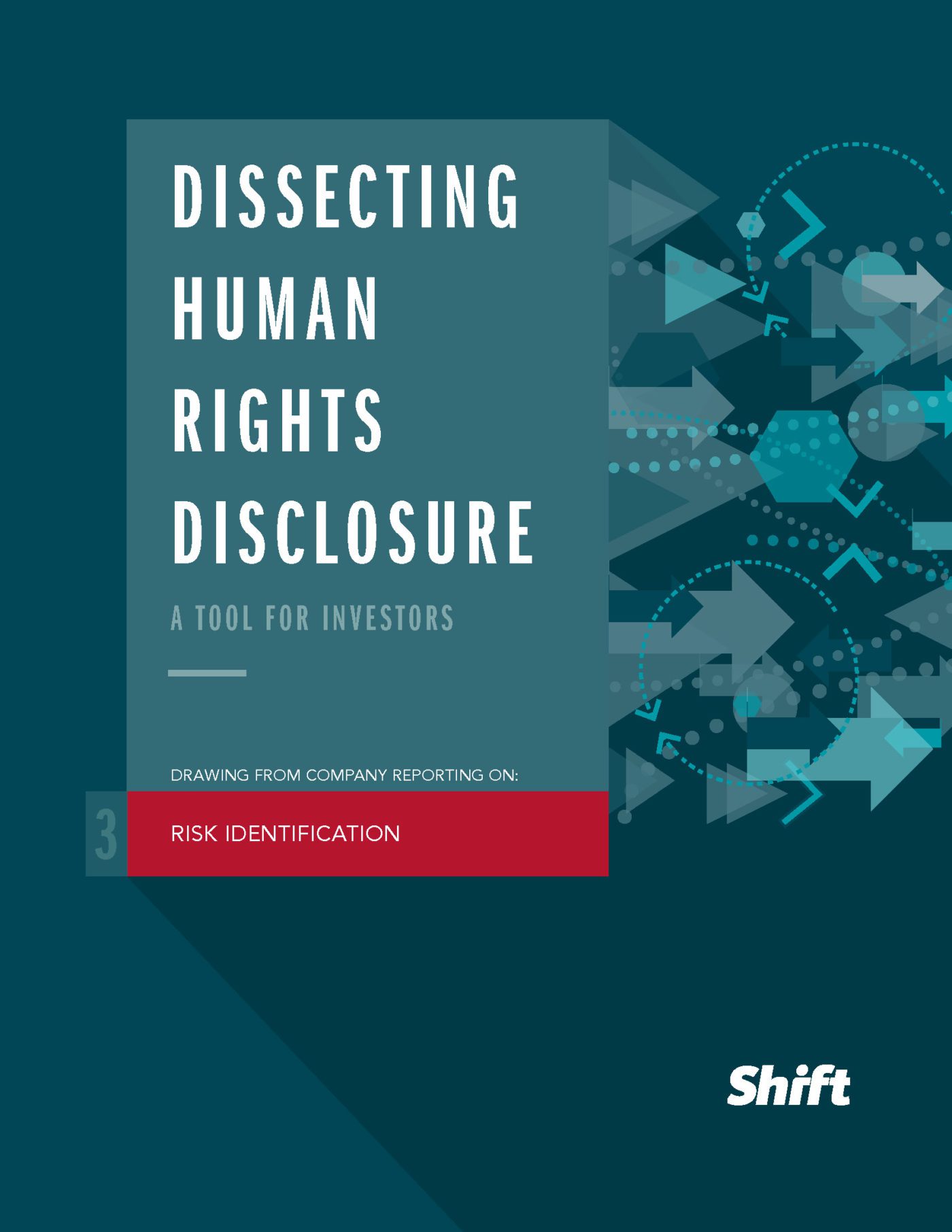
ISSUE 3 – Risk Identification
______
This resource focuses on excerpts from company reporting on setting targets and tracking performance. Specifically, it examines whether the company only reports on issues it deems material to the business; if the only indicated external input for the human rights issues the company prioritizes is a generic survey; if a company’s list of material issues includes both individual human rights and a category of ‘human rights’; and whether human rights issues are listed in company disclosure without further explanation of how these relate to the business’s own operations and value chain.
Issue three uses company reporting from Total, Nestlé, ABN AMRO, Newmont and Pepsico.
ISSUE 4 – Taking Action on Systemic Human Rights Challenges
______
This resource focuses on excerpts from company reporting on systemic human rights challenges. Specifically, it looks at whether the company positions itself solely as part of the solution to the human rights challenge concerned; whether the company only reports its membership in groups or collective initiatives that tackle certain systemic human rights risks without describing its engagement with these initiatives and how this contributes to change; and whether the company reports on any actions it has taken unilaterally to address its own potential involvement with that issue.
The fourth issue uses company reporting from H&M, ASOS, Mondelez, Anglo American and Microsoft.
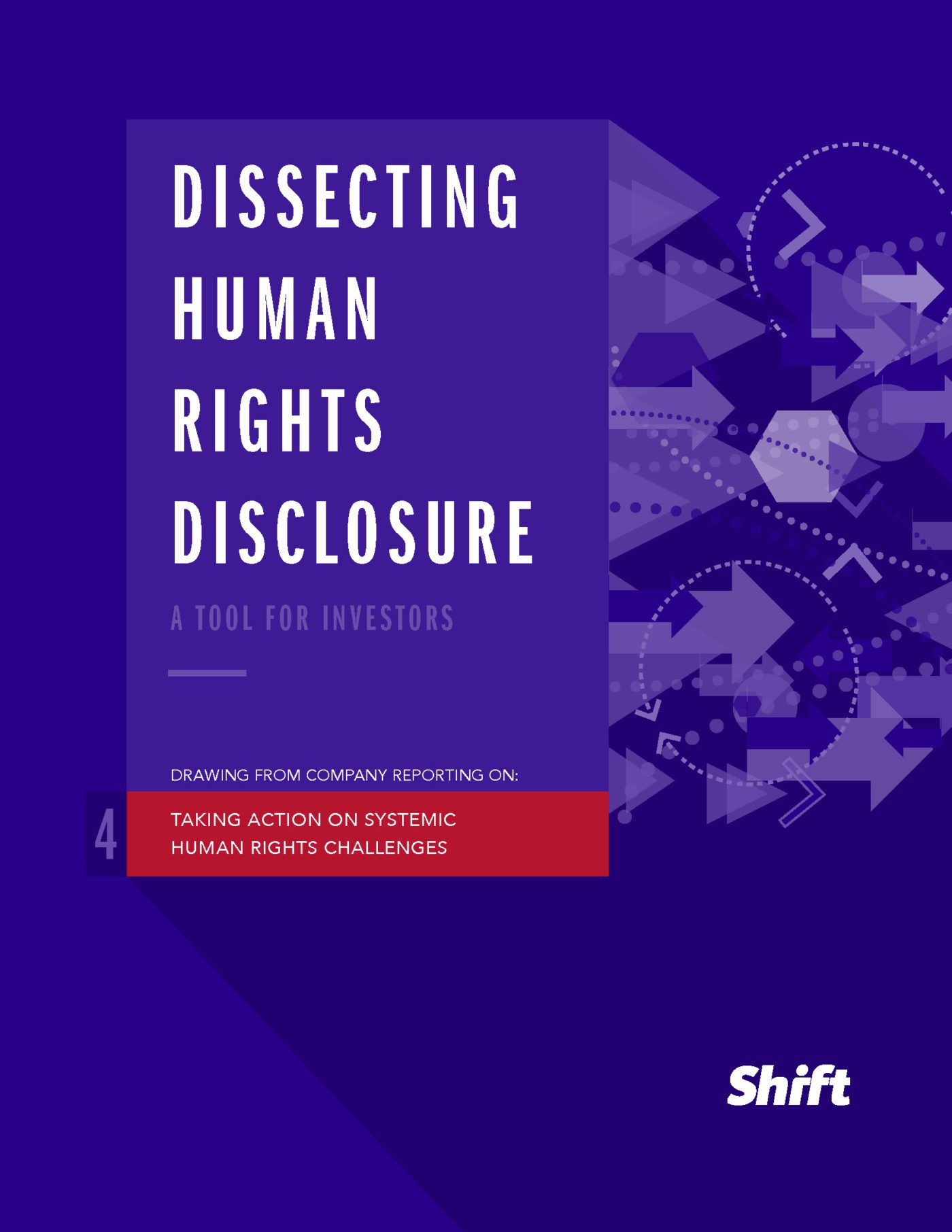
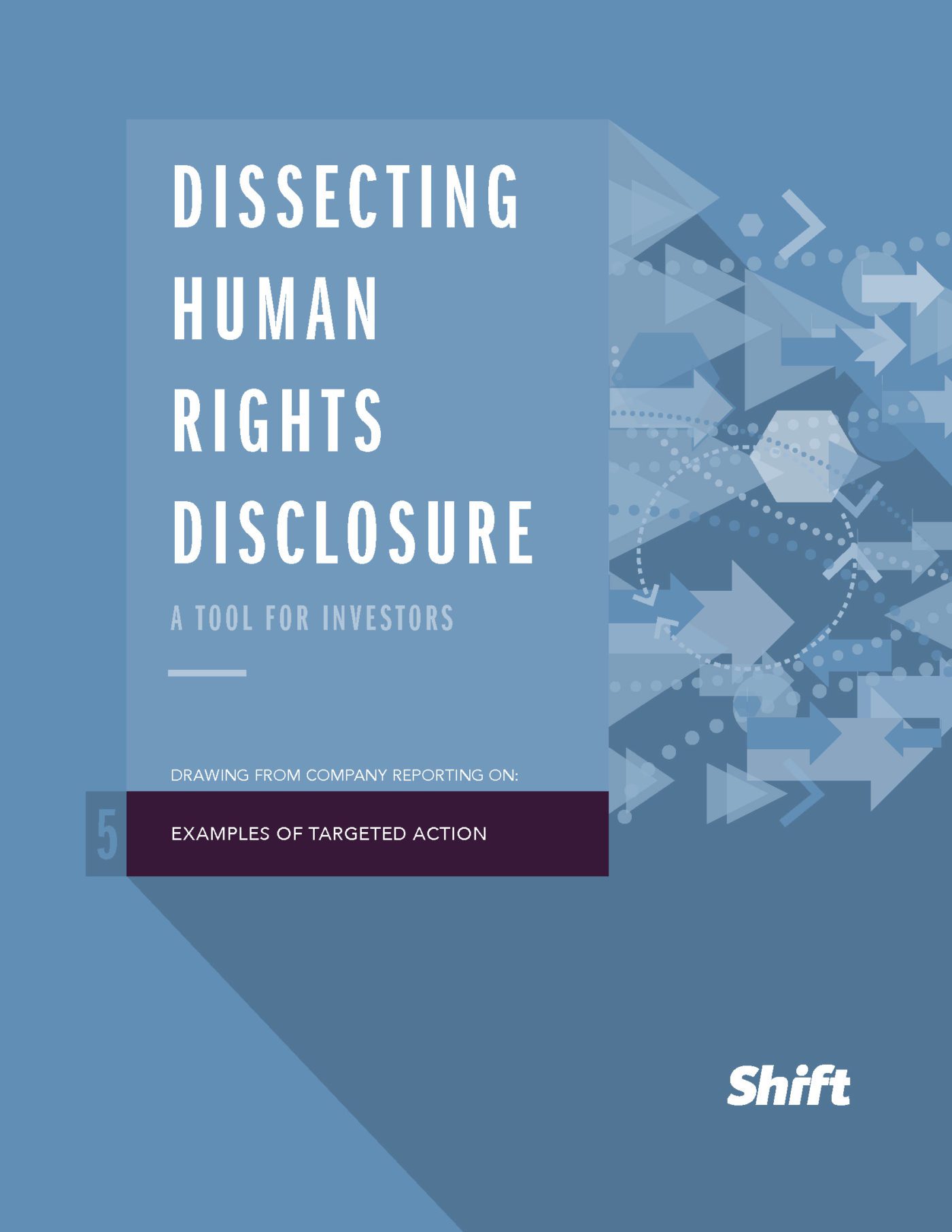
ISSUE 5 – Examples of Targeted Action
______
This resource focuses on examples from companies of targeted action. It delves into whether the company only reports generally on its process for identifying and addressing human rights impacts; whether the company reports on how the perspectives of affected stakeholders informed its understanding of the impact and its decisions on what action to take; and whether the company talks about engagement with suppliers or other business partners on human rights-related issues in terms of compliance.
This resource uses company reporting from ING, M&S, FMO, ASOS and Unilever.
ISSUE 6 – Setting Targets and Tracking Performance
______
The final issue focuses on excerpts from company reporting on setting targets and tracking performance. It looks at whether the company’s targets set and track in reporting are limited to activities or outputs; whether the company follows up on the extent to which all of targets set in one reporting period were met in the next; and whether data on human rights performance is aggregated such that meaningful insights cannot be drawn from the disclosure.
This resource uses company reporting from Unilever, Nestlé, Teck, M&S and C&A.
